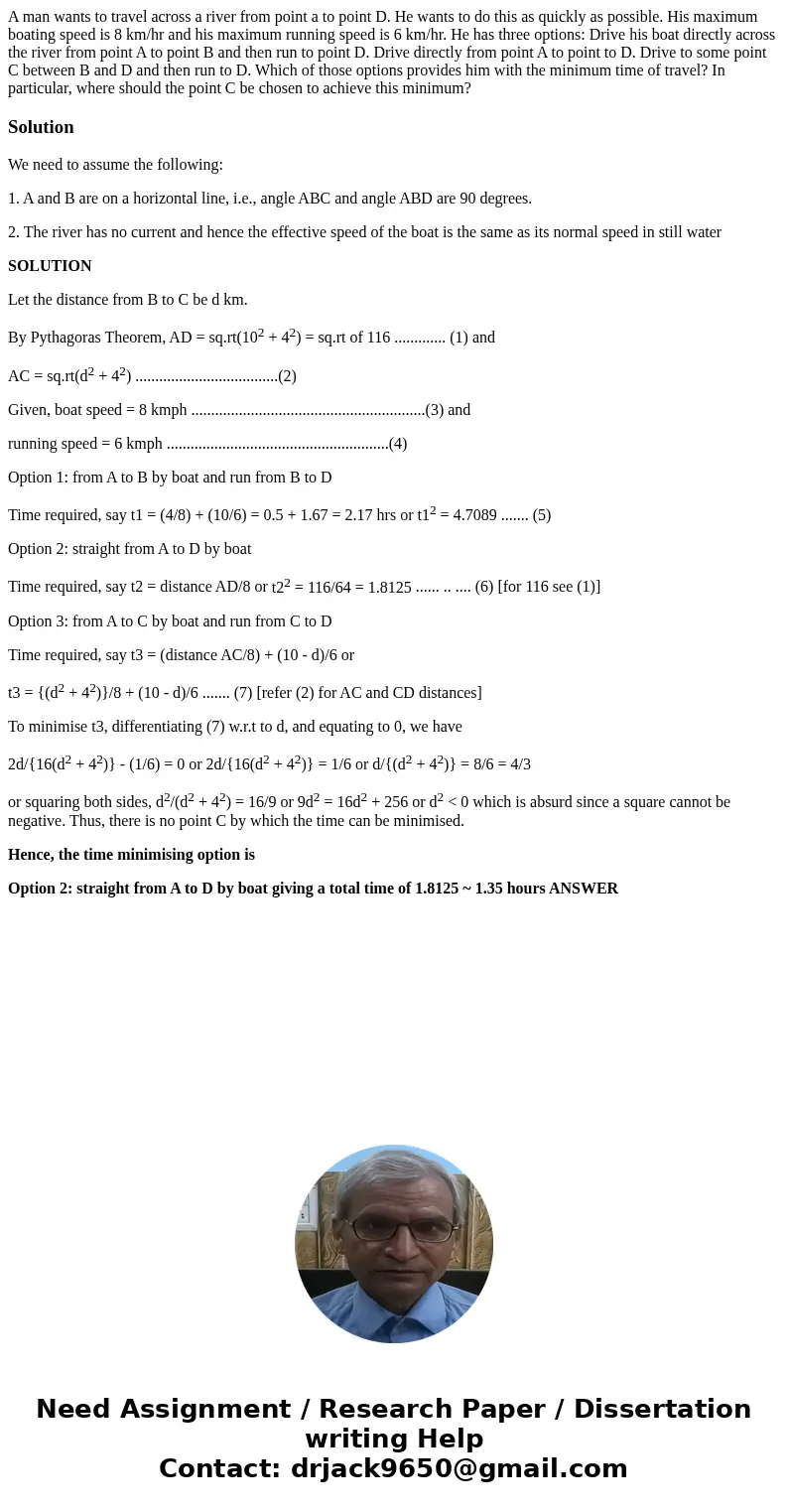A man wants to travel across a river from point a to point D
Solution
We need to assume the following:
1. A and B are on a horizontal line, i.e., angle ABC and angle ABD are 90 degrees.
2. The river has no current and hence the effective speed of the boat is the same as its normal speed in still water
SOLUTION
Let the distance from B to C be d km.
By Pythagoras Theorem, AD = sq.rt(102 + 42) = sq.rt of 116 ............. (1) and
AC = sq.rt(d2 + 42) ....................................(2)
Given, boat speed = 8 kmph ...........................................................(3) and
running speed = 6 kmph ........................................................(4)
Option 1: from A to B by boat and run from B to D
Time required, say t1 = (4/8) + (10/6) = 0.5 + 1.67 = 2.17 hrs or t12 = 4.7089 ....... (5)
Option 2: straight from A to D by boat
Time required, say t2 = distance AD/8 or t22 = 116/64 = 1.8125 ...... .. .... (6) [for 116 see (1)]
Option 3: from A to C by boat and run from C to D
Time required, say t3 = (distance AC/8) + (10 - d)/6 or
t3 = {(d2 + 42)}/8 + (10 - d)/6 ....... (7) [refer (2) for AC and CD distances]
To minimise t3, differentiating (7) w.r.t to d, and equating to 0, we have
2d/{16(d2 + 42)} - (1/6) = 0 or 2d/{16(d2 + 42)} = 1/6 or d/{(d2 + 42)} = 8/6 = 4/3
or squaring both sides, d2/(d2 + 42) = 16/9 or 9d2 = 16d2 + 256 or d2 < 0 which is absurd since a square cannot be negative. Thus, there is no point C by which the time can be minimised.
Hence, the time minimising option is
Option 2: straight from A to D by boat giving a total time of 1.8125 ~ 1.35 hours ANSWER

 Homework Sourse
Homework Sourse